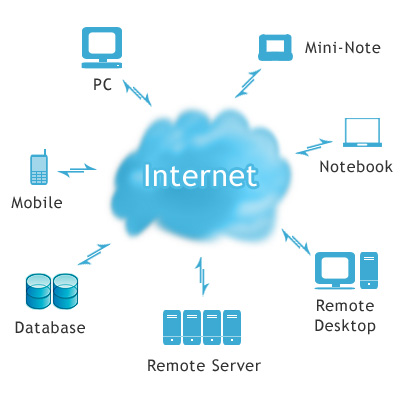
Live online sales and support is always a boon for business, right? That depends — in some cases, poorly implemented live chat at your company site can turn away customers. Deploying it the right way is key.
Depending on how you deploy it, live chat on a company website can be a boon for business or a terrible calamity. For some, it’s like adding a crack team of ace deal-closers who contribute directly to the bottom line. For others, it’s like hiring a surly, inattentive sales clerk who sends customers fleeing for the virtual door.
One example on the plus side: Live chat on the LaptopMD+ web site nabs three or four extra customers a day, or about 10 percent of total customer volume, figures Alex Mouravskiy, who works in online marketing for the Manhattan-based computer repair company.
At Liberty Science Center in Jersey City, N.J., live chat is pumping up sales levels with an average of 50 instant chat conversations a day.
However, Evan Hamilton of the eight-person startup UserVoice, which provides customer feedback tools, says his company has given up on live chat. “We just didn’t have time to do it,” he explains. “Chat is very disruptive.” It also set high expectations about staff availability.
Using online chat for your business might depend on how you deploy it, the expectations and needs of your customer base, and even the technology components you use.
 After a healthy 12.6% increase to $176.2 billion in 2010, U.S. online retail sales are expected to reach $278.9 billion in 2015.
After a healthy 12.6% increase to $176.2 billion in 2010, U.S. online retail sales are expected to reach $278.9 billion in 2015.
Online shopping will continue to cannibalize in-store shopping as consumers become more familiar and begin, in many cases, to prefer the convenience of online shopping, Forrester says.
Increased Internet connectivity via devices like smartphones, tablets and game consoles will also drive growth, as well as new e-commerce models like flash sales (i.e. Gilt Groupe, Neiman Marcus Mid-Day Dash), daily deals (Groupon, LivingSocial) and digital downloads of media (Netflix, iTunes), all of which have enjoyed rapid adoption in recent years.
E-commerce growth in 2010 was driven primarily by existing online shoppers who increased their online spending in traditional categories like books and media, and also began to purchase in less popular categories like furniture and home appliances. Thirty percent of growth was attributed to the 5.5 million consumers who shopped online for the first time in 2010.
 Facebook users spend upwards of 12.7 percent of their time on the site, according to a comScore study. Of course, wherever consumers live, businesses are sure to go. But to what end?
Facebook users spend upwards of 12.7 percent of their time on the site, according to a comScore study. Of course, wherever consumers live, businesses are sure to go. But to what end?
Chief marketing officers surveyed by BazaarVoice and the CMO Club were likely to say their business engaged in at least three forms of social media. But nearly 35 percent of all CMOs didn’t know if their Facebook presence yielded any return on investment.
“If you’re a company who’s spending employee dollars, spending employee time, paying agencies, if you’re actively engaged online and it’s costing your business money, it’s irresponsible not to measure some aspect of that time spent and of that money spent,” says Eric Peterson, founder of Twitalyzer, a Twitter analytics start-up based in Portland.
Quantitatively measuring a brand’s online influence is a relatively new idea, but it may be one of the most important developments in online marketing since Google AdWords. Understanding how your company interacts with its online community, and knowing which tools are effective in the ultra-specific world of the Internet, is crucial for driving your brand’s overall success.
Several young and creative companies have stepped up to the plate with unique ideas for various influence metrics. Many of them function similarly, at least at first: After plugging in your Twitter, Facebook, and LinkedIn profiles, sophisticated algorithms compute your company’s data and visualize the results in pie graphs, scatter plots, flow charts, or even a simple two- or three-digit number. Some sites even offer specific recommendations on optimal hours to engage your clientele. You’d be surprised at how many ways your data can be interpreted.

So, what are your big Internet marketing plans for the New Year? Will you be investing more in social media? Will you start blogging? Will you take a more proactive stance with self-promotion? Whatever your online marketing plans, the end goal is likely to attract more people to your website in the hopes that the influx of new eyes will translate into new customers, new leads and new opportunities for your business. However, you won’t be able to do any of that if your Web site is turning people off, instead of turning them on.
Below are some very common reasons SMB Web sites fail to attract customers and how to avoid falling prey to them.
 The technology for storing digital information has advanced leaps and bounds in the last 20 years. First there was floppy disk, then the CD-ROM, which was followed by the USB and the external hard drive. Now, the latest and greatest in information storage is cloud computing, also known in many cases as software as a service (SaaS).
The technology for storing digital information has advanced leaps and bounds in the last 20 years. First there was floppy disk, then the CD-ROM, which was followed by the USB and the external hard drive. Now, the latest and greatest in information storage is cloud computing, also known in many cases as software as a service (SaaS).
Cloud computing isn’t simply a tool for information storage and backup. There are hundreds of programs and software available through the Internet that use this technology. You’re probably familiar with some of them—Google Documents and QuickBooks Online, for instance. The idea is that through your computer you can access software, tools or other services that are stored on an off-site server. You can then save the files that you create to that same server.
According to Ramon Ray, founder of Smallbiztechnology.com, based in Montclair, N.J., cloud computing provides several benefits for small businesses:
Cost. Generally, cloud computing is cheaper than other software because it doesn’t require costly materials such as discs and manuals. And because the provider takes on the responsibility of storage and upgrades, there’s no need for a small business to hire an IT specialist for that aspect of the business.
Availability. You don’t have to be connected to a server locally to access the files you’ve created. In other words, you could create a document in the office on your desktop and edit the document on your train ride home on your smart phone. For example, an interior designer collaborating with an architect from the other side of the country could use cloud computing to ensure both can access the documents they need through a website.

Ever hear a story about a business owner who enjoys accounting and bookkeeping? I think it is an urban legend. Small business owners tend to dislike crunching numbers because it takes too much time, can be too confusing or it involves expensive, hard-to-use software.
Ever hear a story about a business owner who enjoys accounting and bookkeeping? Some say he lives in Tulsa, others claim it is a woman in Fresno. I think it is an urban legend.
Small business owners tend to dislike crunching numbers because it takes too much time, can be too confusing or it involves expensive, hard-to-use software. The result: 64 percent of businesses manage their money half-heartedly out of shoeboxes and spreadsheets, or generally lack a solid accounting system, according to SimCorp USA Inc. and the Financial Executives Consulting Group.
Vinna Auto Sales and Services, Inc. is located in Boston. They have been servicing Boston-base clients for over ten years.
Travel agency that provides all necessary documentations for traveling locally and abroad.
Hung Electrical Services provides excellent electrical services to residential, commercial and industrial customers throughout southern Massachusetts area.